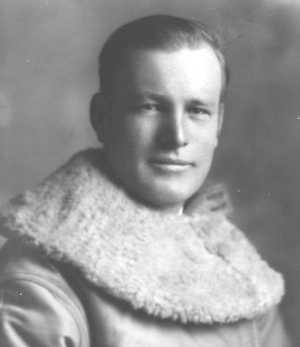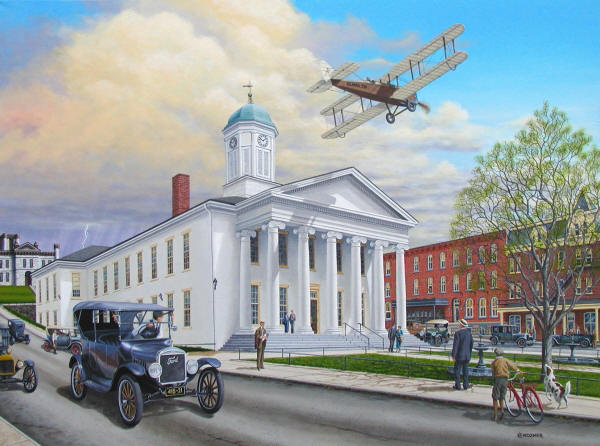
|
|
PROFILE: HAROLD TURNER (SLIM) LEWIS: ADVENTURE WAS HIS MIDDLE NAME
by Nancy Allison Wright
When I asked Slim Lewis what he thought of fellow airmail pilot and author Dean C. Smithís description of him in "By the Seat of My Pants," Smithís popular autobiography, as some who "...could drink more and fly better than anyone else I knew" he just looked down at me from his six-foot-four-inch height and didnít say a word. But thatís the way it was with the man my father, AMP Ernest M. "Allie" Allison, chose to be my godfather, laconic as a Wyoming fence post. It wasnít until I became an adult that I realized that this tall, silent man whoíd stood by me in case my parents crash landed, had lead a life you only read about in adventure stories. As far as Smithís description of him, I could tell from the glint in his steely eyes he didnít think much of it, though the stories Slim tells of his own early antics created a legend all its own. Slim launched his aviation career in 1916 at age 22. Taking flying lesson in Curtiss pushers, he became one of the first half dozen licensed pilots in the United States. "That first plane I soloed didnít even have a tachometer," he said. "We simply hooked an ordinary set of scales to the tail of my Curtiss pusher. If the motor was good enough to pull 320 pounds on the scales, we figured it had enough power to fly." During WWI, he was a civilian instructor and test pilot for de Havilland-4s built in Dayton and Detroit. In 1919, he signed on with the U.S. Air Mail Service. On July 1, 1924, he flew the first regular night mail flight between Omaha and Cheyenne. Commenting on the DH-4 flight schedules he said, "We had quite a system worked out to make sure we got away on schedule. We had a dozen DHs lined up and we went down the line trying each ship. When we found one that would start we threw our mail in the cockpit and were off." And "An instrument panel was just something to clutter up the cockpit and distract your attention from the railroad or river bed you were following." Flying the mail by the seat of his pants resulted in many a forced landing in cow pastures. One time he rammed his plane into the kitchen of a farmhouse. On another occasion he collided with a bull. Once flying from Scottsbluff, Nebraska, to Cheyenne, a distance of only 80 miles, he had to land in fields four times because it was so cold that the carburetor kept icing. Finally he gave up, took the mail sack to a farmhouse, borrowed a team and wagon and drove the last four miles to the Cheyenne airport. In 1927 when the Post Office contracted airmail to private carriers, Slim signed on with Boeing Air Transport (later United Air Lines). By 1929 he was chief pilot of Unitedís western division. During this time the following story dogged Slim like a rogue tail wind. He noticed that a certain pilot frequently reported that he was detained at a back country ranch because of weather. Checking the schedule, Slim noticed that the pilotís calls coincided with another pilotís frequency in the same area. Lewis hopped into a plane to check. He spotted two Boeing 40s in a pasture under a clear blue sky, and two pilots holed up in a cabin playing poker with the rancher. The story goes that he gave them a royal what-for, then poured himself a drink and bought a stack of chips. In 1937 Slim and his good friend Philip G. Johnson left Boeing to form Trans-Canada Airlines. Slim was stationed at Winnipeg in charge of flight personnel. By 1939 Slim returned to Boeing as chief pilot, testing B-17 and B-29 bombers. Slim retired from aviation in 1947 on his 27,000 acre cattle ranch 25 miles north of Cheyenne. Friends say he felt that all those instruments and dials in the cockpit had made the seat of his pants just a piece of cloth; all the fun had gone out of flying. Slim made his Last Flight on July 25, 1965, in Cheyenne.
|
History |
Air Mail Pilots
|
Photo
Gallery |
Flight Info
|
Antique Airplanes
|
Members |
|
copyright © 1999 Nancy Allison Wright, President Air Mail Pioneers
|


